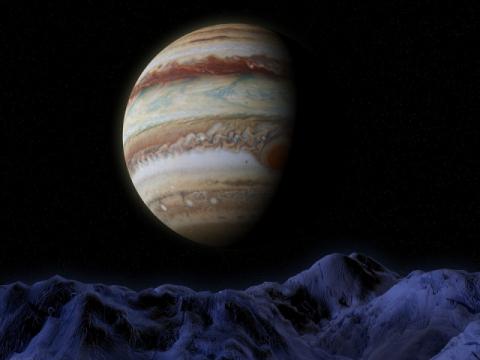A Powerful Frontal Collision Explains Jupiter's Strange Core

Scientists who have investigated Jupiter's core using data from NASA's Juno mission have come up with a theory about its strange composition - a powerful frontal collision of the protoplanet billions of years ago with a massive planetary embryo, BTA reported.
The existence of Jupiter begins as a rocky and icy planetary embryo. Before Juno, scientists thought its core was dense and compact. NASA's mission data, however, refute this theory, showing that it is elongated and thin, consisting not only of solid rocky material and ice, but also of hydrogen and helium.
Scientists from the Sun Yat-sen University in Zhuhai, China, have used computer simulations to conclude that the cause of the unusual shape of the Jupiter's core is a powerful frontal collision of a young Jupiter with a planetary embryo more massive than Earth. As a result of the impact, the primary compact nucleus of the protoplanet was destroyed and a strange elongated and diluted structure was formed.
"Such a catastrophic collision destroyed Jupiter's primordial compact core, and a dilute-core-like structure was formed.", lead study author Shangfei Liu of Sun Yat-sen University in Zhuhai, China, said in an email to Space.com.
A better understanding of how Jupiter's internal structure was formed sheds light on the processes that shape other planets in the solar system, scientists noted.
"Through computational simulations, we show that there is at least 40% chance that Jupiter would collide with another planetary embryo in the next few million years," Liu added.
- Log in to post comments





